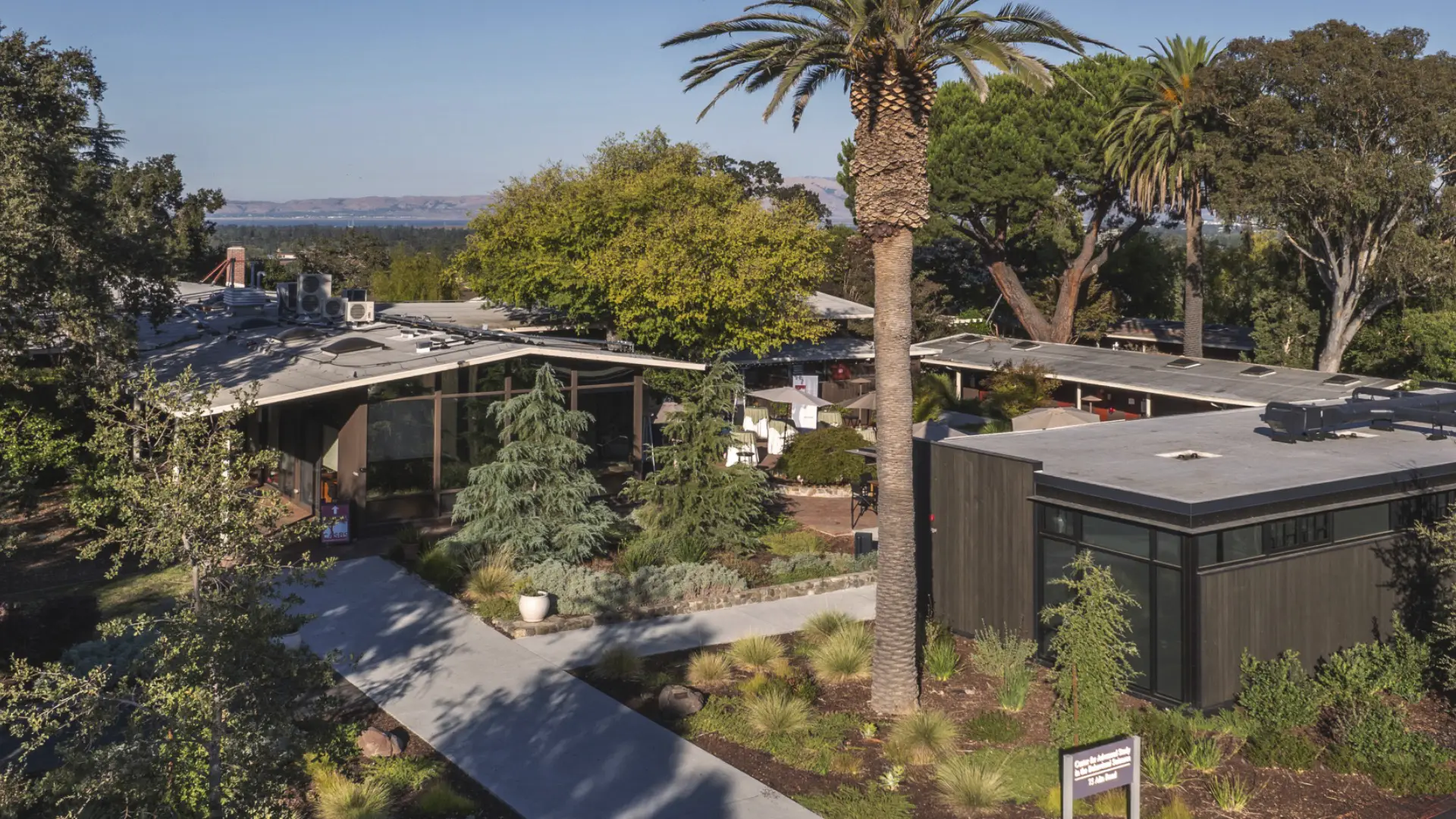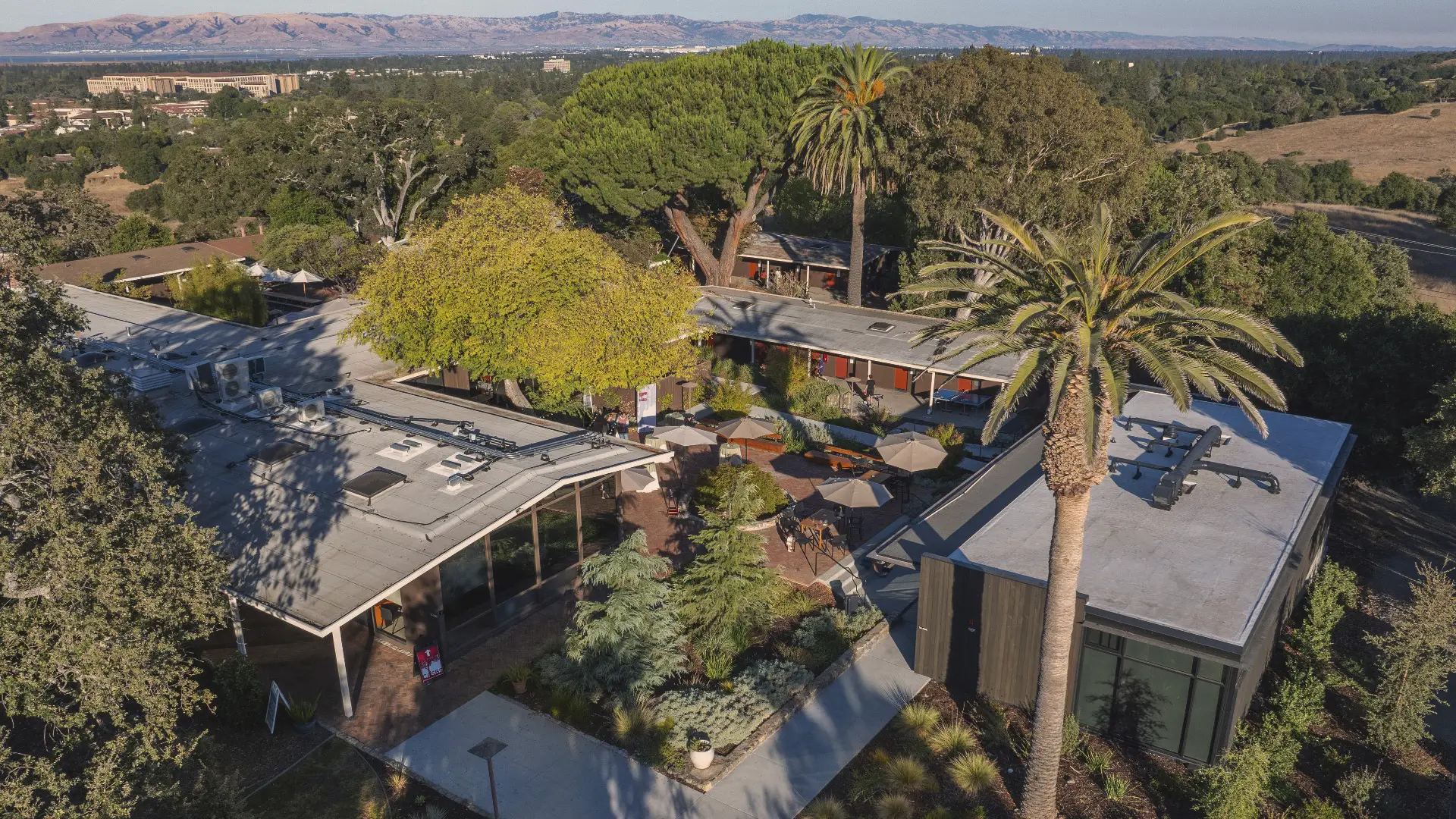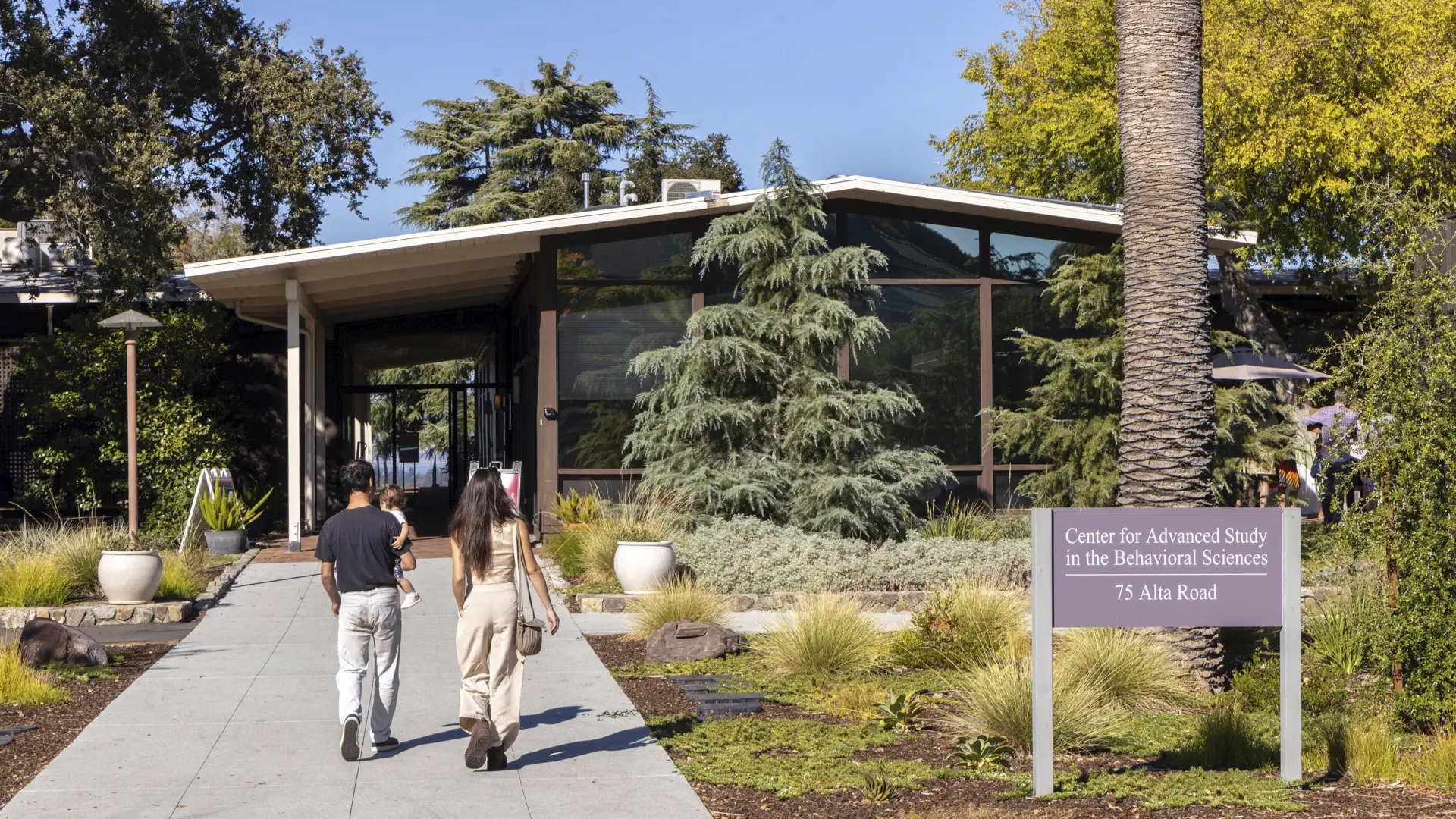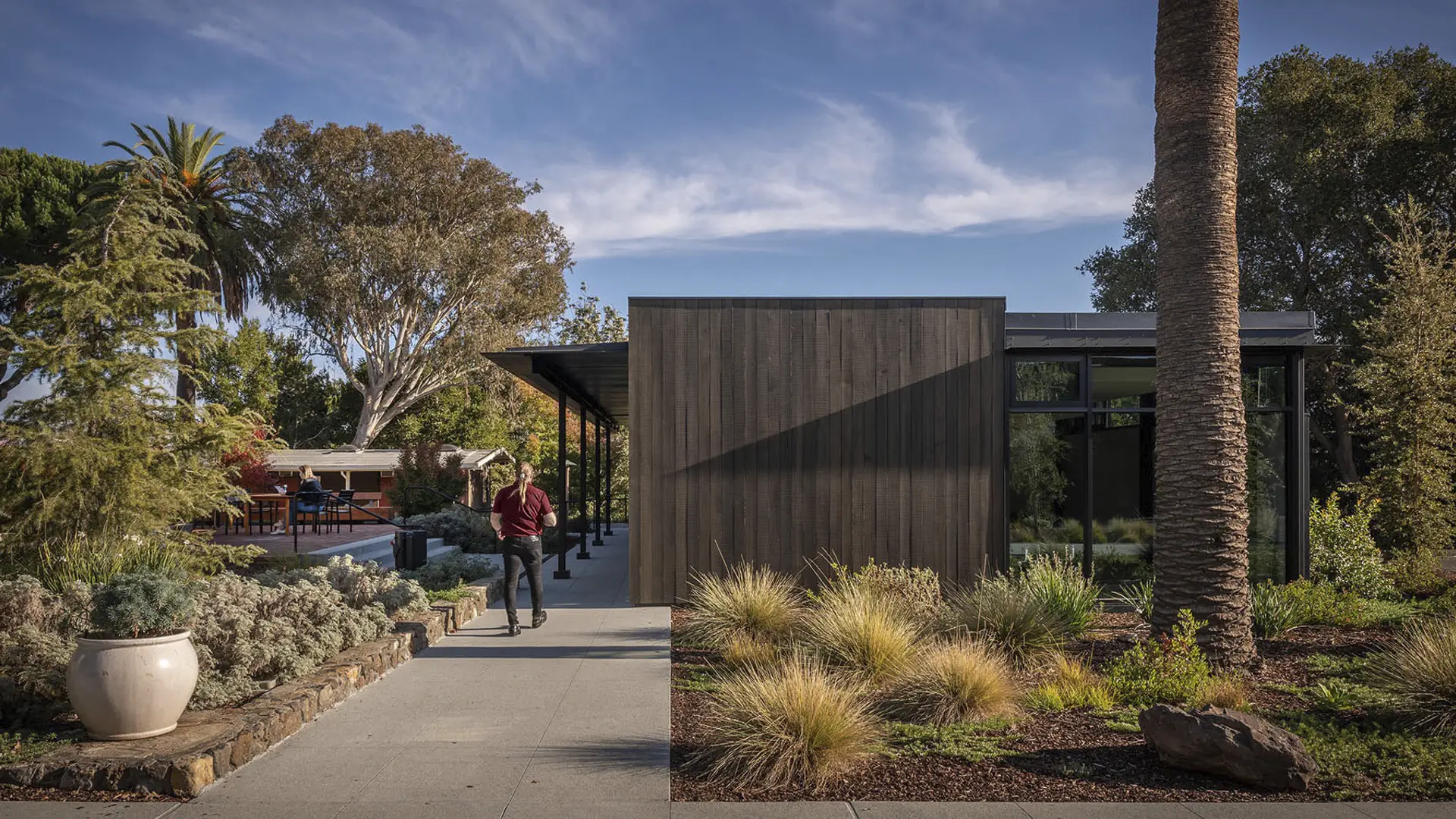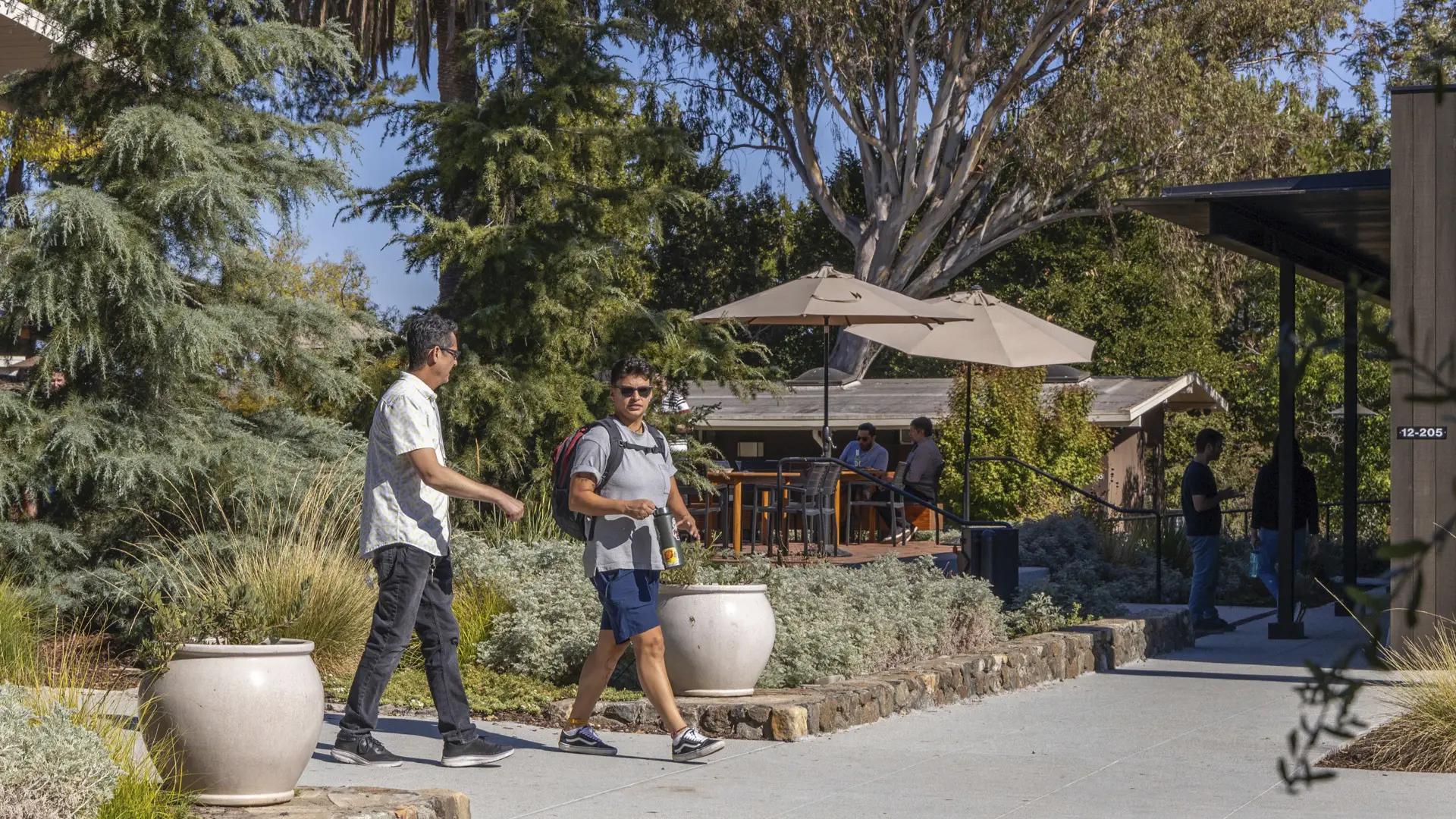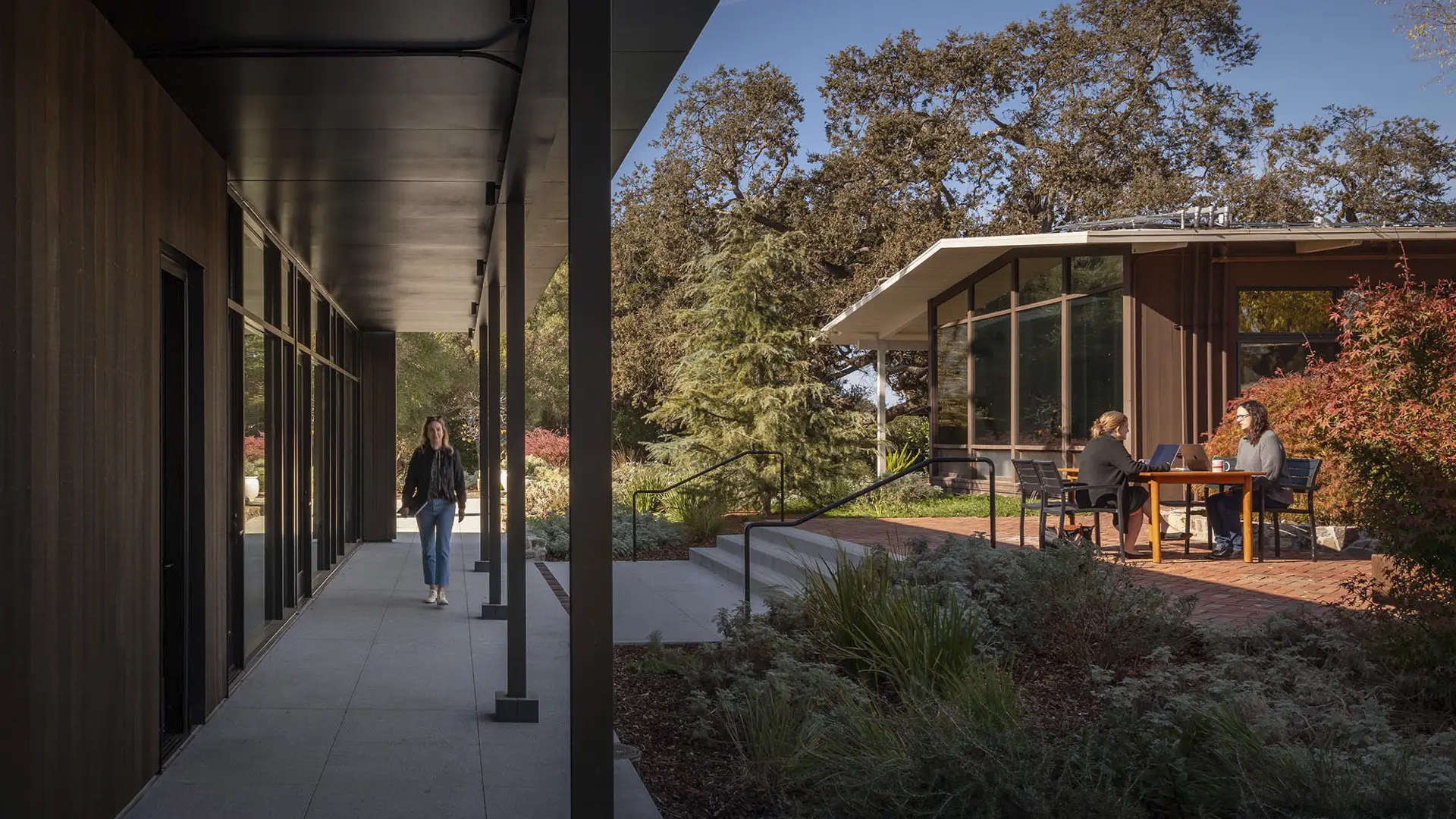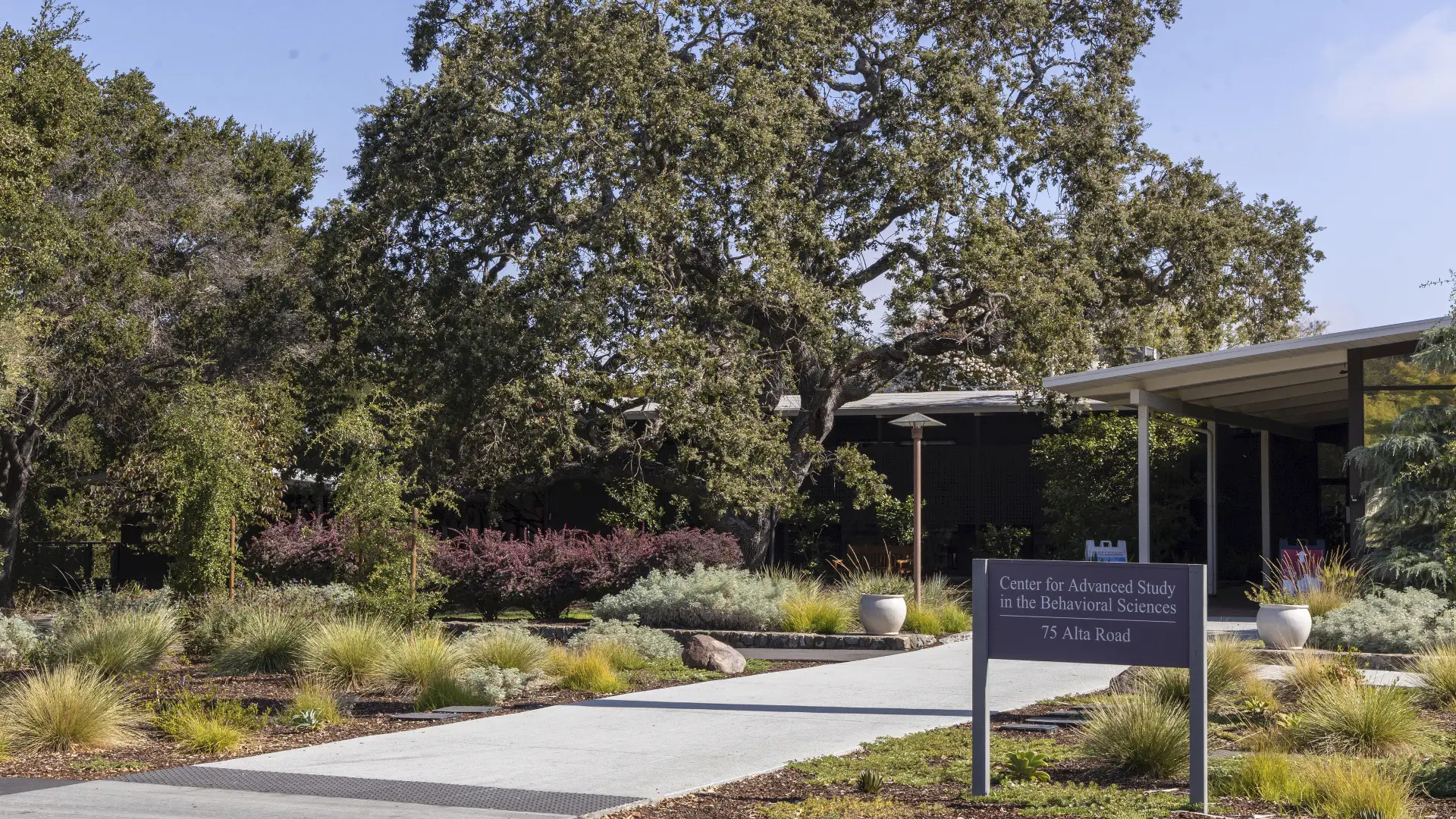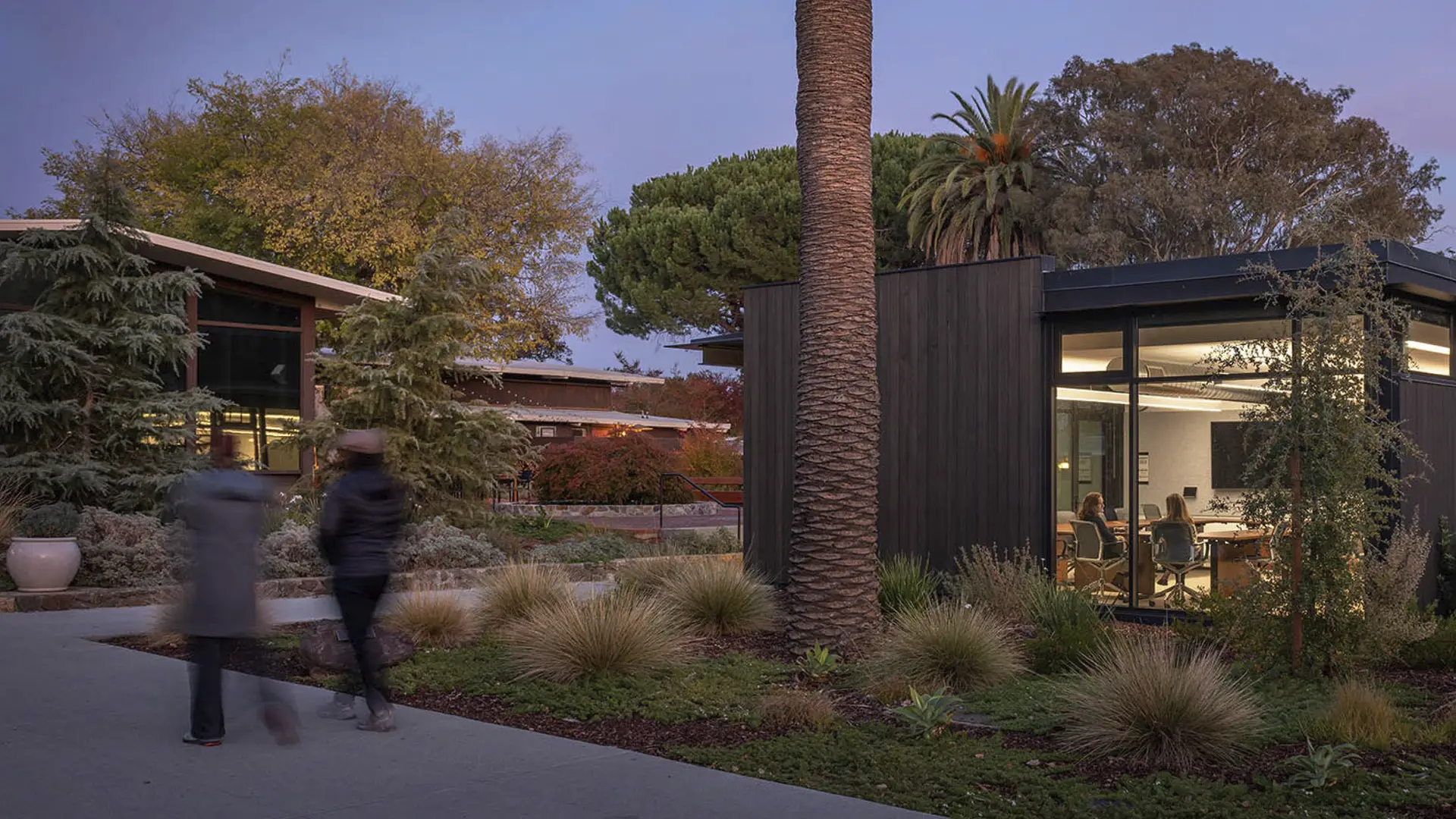Sitting atop a hill above Stanford University’s campus, the Center for Advanced Study in Behavioral Sciences (CASBS) has long been a destination for groundbreaking thinkers, with 30 Nobel Prize winners, 25 Pulitzer Prize winners, 52 MacArthur Fellows, and 176 members of the National Academy of Sciences among the esteemed class of Fellows. Situated between the campus’ well-known Stanford Dish and undeveloped pastures, CASBS occupies a unique place at the wildland-urban interface, functioning as a campus within a campus—an enclave for innovation.
To shape the next chapter of this legacy, SWA collaborated with Olson Kundig to revitalize CASBS’s mid-century modern setting, honor Thomas Church’s original landscape design, and enhance the facility to inspire collaboration.
Olson Kundig introduced the first new building to the campus since its founding in 1954. Strategically positioned, the new administration building frames a central courtyard, transforming what was once paved asphalt into an inviting social hub. Oriented for optimal sunlight, the courtyard is marked by prominent existing trees to enhance their presence. The trees are complemented by a series of stone retaining walls, referencing the feature often used in Church’s designs to navigate grade changes across the site and improve the connection between gathering spaces.
With no original records of Church’s design to reference, SWA drew from a portfolio of nearly 300 Stanford projects and studied Church’s broader portfolio to develop a list of signature plantings appropriate for the historic campus. The selected tree palette was expanded using a wider range of more adaptable and climate-resilient oak species, creating the next generation of oak canopy shading the complex.
The completed courtyard establishes a welcoming entrance to the CASBS campus. It also serves as a development tool, leveraging the majestic California landscape to create an atmosphere that invites engagement and events that spark new ideas. As the first major update to the CASBS campus in 60 years, the collaboration building and courtyard enhance the campus experience, honoring the Fellows of the past while inspiring those of the future for decades to come.
Universidad de Monterrey Campus Master Plan
The project focuses on improving the sustainability of the 247-acre campus, designing a shift from a vehicular orientation to one that encourages pedestrian, bicycle, and transit use. Site design strategies employ indigenous plant materials and natural water retention and filtration for low-maintenance landscaping. Phase 1 includes site design for one of Latin...
CSU Long Beach Peterson Hall
CSU Long Beach is in the process of a series of major renovations as its mid-century buildings fall short in terms of capacity and technology. The Peterson Hall project extends the classroom experience to the outdoors, while also adding much-needed sustainability updates to the landscape. Terraced seating of composite wood invites students to lounge while awai...
Soka University
When Japan-based Soka Gakkai International, one of the world’s largest lay Buddhist organizations, decided to establish a fully accredited liberal arts university in southern Orange County, SWA joined with the architects to create a setting that expresses the goals of the new university. Soka means “to create value” and the ideal of Soka education is to foster...
RIT Global Village and Global Plaza
Global Village, a pedestrian-only infill neighborhood adjacent to Rochester Institute of Technology’s academic core, and its mixed-use centerpiece, Global Plaza, create a social heart for 17,200 students and 3,600 faculty and staff. The landscape architects and architects collaborated on an urban design that establishes multiple “crossroads” ...



